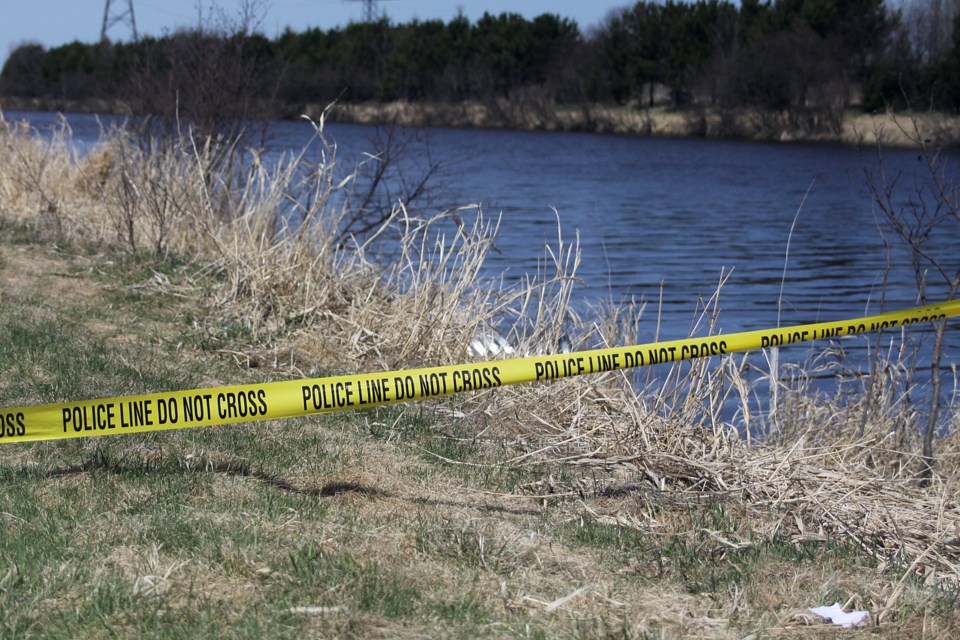THUNDER BAY - After more than a year of collecting data, Thunder Bay Police have a much better understanding of where some of the most high-risk areas along city waterways are and police say the number of incidents is cause for concern.
During the Thunder Bay Police Services Board meeting on Tuesday, Det. Const. Brooke Pilley of the Thunder Bay Police Service, provided the board with an overview of the Floodway Project. The project is being conducted by Thunder Bay Police in response to the recommendations resulting from the inquest into the deaths of seven Indigenous youth in the city.
“We found a lot of things, mostly that there is a lot of occupancy in these areas, that there is a lot of unlawful use of these spaces such as public intoxication, people engaging in risky behavior, and we’ve had a lot of water rescues,” Pilley said. “We’ve known it’s been a problem for a while, but we didn’t have anything tracking that data.”
According to data collected over the last 13 months, police have responded to 459 incidents along area waterways, involving a total of 1,211 people with an average age of 35.5.
The Neebing/McIntyre Floodway had the highest number of incidents at 307, with 210 of those taking place near the Thunder Centre. The next highest area was McVicar Creek with 93 incidents and the Lower Neebing River with 27.
The data also showed police responded to the most incidents around waterways during the summer months, but the numbers continue to climb even in winter. November and December saw only one and seven incidents respectively in 2016. In 2017, those numbers climbed to 24 in November and 15 in December despite much colder temperatures.
In the same 13 month period, Police were also involved in 100 life-saving events, which may have included pulling people from the water or transporting individuals to the hospital if in distress.
Prior to the Floodway Project, data on police responses to city waterways was not kept with the same level of detail, and without that data, it is difficult to say whether more people are congregating in these areas, or if a stronger police presence is making them more visible.
“Without having the history or the past data to look to for that, it would be difficult to speculate,” Pilley said. “Hopefully with this tracking system we have in place and continuing it forward, we would be able to make those kinds of assumptions or correlations for the data.”
The project is also looking at ways to make these areas safer or deter people from utilizing them for illegal activities, such as using illegal drugs or public intoxication.
A crime prevention through environmental design study was conducted and provided ways to make these areas more accessible to natural surveillance by people who live in or access the area by cutting back vegetation, implementing more adequate lighting, and encouraging the public to utilize these spaces for walking, hiking, cycling, or cross-country skiing.
Other options include using rocks or vegetation along river banks to make lying down or sitting near the water more difficult.
“Some of the things we’ve been doing have been more of a reactive approach to it,” Pilley said. “I think we need to take proactive steps to get to the root causes of these issues, mental health, homelessness, poverty, addiction.”
“Until we do those things, I think we will be potentially displacing this from one place to another,” Pilley continued. “However, if we can displace it to a safer place by focusing on these rivers, because they do introduce an element of risk, then that is at least one positive outcome.”
Acting Thunder Bay Police chief, Sylvie Hauth, agrees that the data shows just a small piece of a much bigger picture.
“You are looking at substance abuse, homelessness, and unless the root causes of those issues are addressed, you are really only taking the same people and moving them to a different location that is not under police scrutiny,” she said. “The data is telling us where our higher incident areas are. As we saw in the report, two areas really stand out, so in terms of the bigger work of the city and the Crime Prevention Council and the safety audit, we will probably start focusing on those two specific areas based on the data that has been collected.”
Pilley said there is still a lot more work to be done, but the police service is already taking steps to reduce the risk of these areas. Daily foot patrols by officers are already taking place in high-risk areas and police are partnering with community groups such as the Bear Clan, who also patrol area waterways. Pilley encourages anyone who sees someone who may be at risk in these areas to contact police.
“I think it’s really important,” he said. “As a police service, while we are taking those steps, we have a whole city to manage and respond to. We are happy to patrol these areas as part of our general patrols, but when calls for service, in general, are high, we can’t get down to those areas unless it is a high priority call.”
